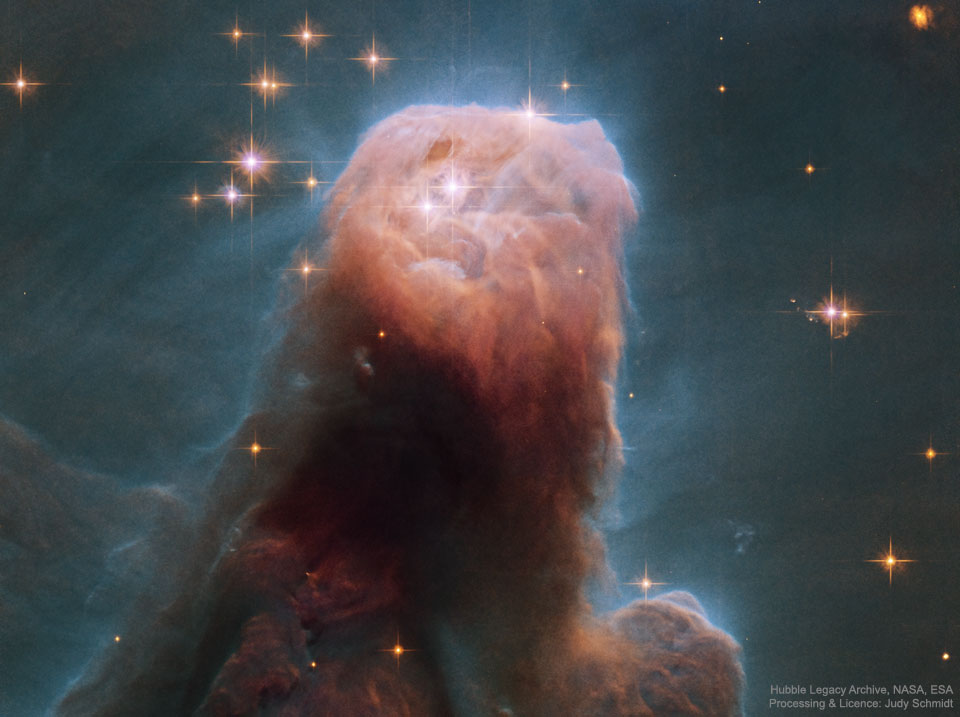2024年2月4日
The Cone Nebula from Hubble
Image Credit: Hubble Legacy Archive, NASA, ESA – Processing & Licence: Judy Schmidt
Explanation: Stars are forming in the gigantic dust pillar called the Cone Nebula. Cones, pillars, and majestic flowing shapes abound in stellar nurseries where natal clouds of gas and dust are buffeted by energetic winds from newborn stars. The Cone Nebula, a well-known example, lies within the bright galactic star-forming region NGC 2264. The Cone was captured in unprecedented detail in this close-up composite of several observations from the Earth-orbiting Hubble Space Telescope. While the Cone Nebula, about 2,500 light-years away in Monoceros, is around 7 light-years long, the region pictured here surrounding the cone’s blunted head is a mere 2.5 light-years across. In our neck of the galaxy that distance is just over half way from our Sun to its nearest stellar neighbors in the Alpha Centauri star system. The massive star NGC 2264 IRS, seen by Hubble’s infrared camera in 1997, is the likely source of the wind sculpting the Cone Nebula and lies off the top of the image. The Cone Nebula‘s reddish veil is produced by dust and glowing hydrogen gas.
Tomorrow’s picture: carina’s crazy core
哈勃影像: 锥状星云
影像提供: Hubble Legacy Archive, NASA, ESA – 影像处理与授权: Judy Schmidt
说明: 恒星正形成于锥状星云内的庞大尘埃柱里。在恒星育婴室里,诞生恒星的云气和尘埃云受到新恒星高速恒星风之吹袭,常会形成许多锥状物、云柱和壮观且具有流动感的结构。著名的范例之一,是位于明亮庞大的银河恒星形成区NGC 2264之内的锥状星云。上面这幅具有前所未见解晰度的锥状星云特写组合影像,组合自数张哈勃太空望远镜照片。虽然位在麒麟座内、距离我们约有2,500光年远的锥状星云,长达7光年,不过上面这张影像所呈现的锥顶区,跨幅大约只有2.5光年。于我们所在的旋臂颈部区上,这个距离只比太阳和恒星近邻南门二的间距之半要多一点而已。 1997年哈伯红外线相机所侦测到的、位于此影像顶缘之外的大质量恒星NGC 2264 IRS,可能就是雕塑椎状星云的恒星风之源头。锥状星云外裹的泛红薄纱,则是尘埃和氢气云所发出的辉光。
明日的图片: carina’s crazy core



